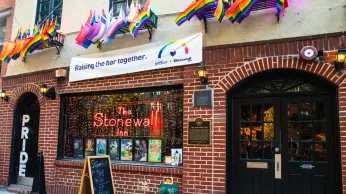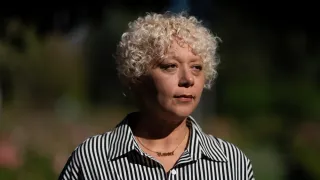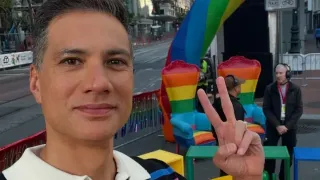
5 hours ago
From Vision to Recognition: The History of October as LGBTQ+ History Month
READ TIME: 3 MIN.
October’s status as LGBTQ+ History Month in the United States is the result of a grassroots initiative led by Rodney Wilson, the first openly gay public school teacher in Missouri. In January 1994, Wilson recognized a gap in students’ understanding of LGBTQ+ history and the broader community’s contributions. Inspired by the precedent set by Black History Month and Women’s History Month, he envisioned a dedicated period where LGBTQ+ stories, achievements, and struggles could be explored and celebrated openly in schools and communities nationwide .
Wilson’s initial outreach involved collaborating with Johnda Boyce, his college best friend, who helped refine the proposal. He then distributed the plan to organizations, educators, and advocacy groups, catalyzing the formation of the first LGBT History Month Coordinating Committee. Notable early members included Kevin Boyer of the Gerber/Hart Gay and Lesbian Library and Archives, Kevin Jennings of the Gay, Lesbian and Straight Education Network (GLSEN), and Paul Varnell, a writer for the *Windy City Times* .
October was chosen deliberately for both practical and symbolic reasons. Unlike June’s Pride Month, which often falls during school breaks, October is firmly within the academic calendar, enabling educators to integrate LGBTQ+ history into curricula and classroom activities. The month also holds deep historical meaning for the LGBTQ+ community: it is the anniversary of the first two National Marches on Washington for Lesbian and Gay Rights (1979 and 1987), pivotal events that mobilized the community and demanded equality on a national stage .
Another foundational event commemorated in October is National Coming Out Day, observed annually on October 11. Established in 1988 by Rob Eichberg and Jean O’Leary, National Coming Out Day marks the anniversary of the second March on Washington and emphasizes the importance of visibility and openness. The celebration of LGBTQ+ History Month in October thus aligns with key moments of activism and personal affirmation within the community .
The momentum for LGBTQ+ History Month grew rapidly after its introduction. Early endorsements came from influential advocacy organizations including GLAAD, the Human Rights Campaign, the National Gay and Lesbian Task Force (now the National LGBTQ Task Force), and the National Education Association (NEA). The NEA’s 1995 General Assembly formally recognized LGBTQ+ History Month alongside other commemorative months, signaling growing institutional acceptance .
Official recognitions by state and local governments followed, with governors in Connecticut, Massachusetts, and Oregon, as well as mayors in Boston and Denver, issuing proclamations in support of the month’s aims. This institutional backing helped shield the month from early controversy, including opposition from conservative groups, and allowed it to expand organically across the country .
Since its inception, LGBTQ+ History Month has grown in visibility and impact. By 2012, it was officially celebrated in two major American school districts: Broward County, Florida, and Los Angeles, California. The observance has also been adopted internationally, with Canada and Australia marking LGBTQ+ History Month in October. In the United Kingdom and Hungary, the month is observed in February, aligning with significant local legal milestones, while Berlin, Germany, observes it in May .
Each region’s approach reflects its own historical context, but the core purpose remains the same: to foster education, promote visibility, and celebrate the contributions of LGBTQ+ people. The month encourages schools, organizations, and communities to host events, display LGBTQ+ history exhibits, and provide resources that reflect the diversity and resilience of the community .
LGBTQ+ History Month serves as more than a retrospective; it is a platform for ongoing advocacy and education. By highlighting role models, pivotal moments, and ongoing challenges, the month supports efforts to combat discrimination, increase understanding, and promote acceptance. Educators, students, and activists use this time to share personal stories, amplify underrepresented voices, and reflect on the progress and setbacks that have shaped LGBTQ+ rights .
The ongoing relevance of LGBTQ+ History Month is underscored by recent debates over the inclusion of LGBTQ+ topics in school curricula and the broader struggle for equal rights. The month reminds society of the importance of remembering and honoring the past while continuing to push for a more inclusive future .
As LGBTQ+ History Month continues to evolve, its origins in a single teacher’s vision, its strategic timing, and its embrace by a growing coalition of allies stand as a testament to the power of visibility, education, and collective action.






